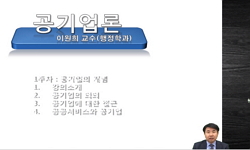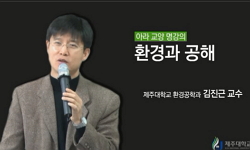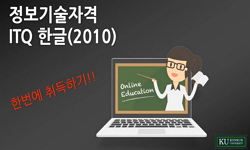본고에서는 불교 교리의 다양성이라는 측면에서 불교의 사상적 흐름을 소개하고자 한다. 불교 학파 중 4세기 이전부터 강한 영향력을 발휘했던 정량부와 독자부의 ‘개아(pudgala)론’과 관련...
http://chineseinput.net/에서 pinyin(병음)방식으로 중국어를 변환할 수 있습니다.
변환된 중국어를 복사하여 사용하시면 됩니다.
- 中文 을 입력하시려면 zhongwen을 입력하시고 space를누르시면됩니다.
- 北京 을 입력하시려면 beijing을 입력하시고 space를 누르시면 됩니다.
https://www.riss.kr/link?id=A108052636
- 저자
- 발행기관
- 학술지명
- 권호사항
-
발행연도
2022
-
작성언어
Korean
- 주제어
-
KDC
220
-
등재정보
KCI등재후보
-
자료형태
학술저널
-
수록면
13-40(28쪽)
- DOI식별코드
- 제공처
- 소장기관
-
0
상세조회 -
0
다운로드
부가정보
국문 초록 (Abstract)
본고에서는 불교 교리의 다양성이라는 측면에서 불교의 사상적 흐름을 소개하고자 한다. 불교 학파 중 4세기 이전부터 강한 영향력을 발휘했던 정량부와 독자부의 ‘개아(pudgala)론’과 관련한 맥락을 살펴보고, ‘개아론’이 계율 및 수행도 등과 관련한 맥락에서 비롯되어서 어떤 행위를 한 이가 그 결과를 받는다는 문제의식에서 출발한다는 점을 언급하였다. 이러한 문제의식에서 시작한 논의가 불교 내 다른 학파로부터 ‘무아설’과 상충되는 고정적이고 불변하는 ‘자아’로 비판받았다는 점도 거론하였다. 그리고 정량부 출신의 진제가 동아시아에서 ‘아말라식’과 ‘여래장’, 그리고 대승기신론의 ‘진여’를 선양하였다는 점에서 정량부와 독자부의 ‘개아론’이 이러한 개념들과 일정 부분 연결되어 있을 가능성이 있다는 점도 논의하였다.
‘무아’의 가르침과 팔천송반야경에서 설한 ‘다르마(dharma)의 비실재성’이라 명명할 수 있는 ‘대승환영주의’와 중관학자가 피력하는 ‘모든 다르마의 자성이 공하다’는 가르침이 설일체유부에서 주장하는 ‘다르마에 자성이 있다’는 입장과 대비되는 입장임을 언급하였다. 그리고 보성론에서는 기존의 중관학자들처럼 ‘모든 다르마의 자성에는 고정적인 실체가 없다’는 것을 주장하는 것이 아니라 ‘비본질적인 번뇌가 공하다는 점’을 피력하고 있음도 밝혔다. 어쩌면 불교는 ‘무아’와 ‘개아’, ‘자성’과 ‘무자성’, ‘다르마의 공’과 ‘번뇌의 공’이 서로 긴장관계를 구축해 온 역사일지도 모른다.
끝으로 ‘ 대중의 삶을 외면한 ‘산중불교’라는 한계를 극복하기 위해 ‘대중 불교’와 ‘생활 불교’라는 당시의 시대적인 화두를 표방하고 새로운 수행공동체를 선보였던, 카리스마 있는 지도자였던 대행은 ‘주인공’과 ‘한마음’이라는 키워드로 자신의 수행법을 대중들의 눈높이에 맞춰서 널리 보급했다는 점에서 주목할 만하다.
다국어 초록 (Multilingual Abstract)
This study introduces the flow of Buddhist thought in terms of the diversity of Buddhist tenets. The study explores the concept of personalism (pudgalavādin) advocated by the Sāṃmitīya School and Vātsīputrīya School—two Buddhist schools tha...
This study introduces the flow of Buddhist thought in terms of the diversity of Buddhist tenets.
The study explores the concept of personalism (pudgalavādin) advocated by the Sāṃmitīya School and Vātsīputrīya School—two Buddhist schools that exerted powerful influence beginning in the 4th century—and indicates that the concept of personalism originated from the context of the precepts and the path to enlightenment, as well as from the simple perspective that an agent of action receives the results of their actions. This study also states that the discussions that began from this simple perspective was criticized by other Buddhist schools as advocating the concept of a fixed and permanent “self,” a position contradicting the concept of “non-self.” This study also discusses Paramārtha(眞諦), who belonged to the Sāṃmitīya School, and who promoted three concepts expounded “by the Awakening of Mahayana Faith, āmalavijñāna, tathāgatagarbha, and thusness (tathatā)” I suggest that these concepts are possibly connected to some degree to the concept of personalism taught by the Sāṃmitīya School and Vātsīputrīya School.
This study suggests that the following three Mahayana Buddhist teachings are contradictory to the Sarvāstivāda School’s contention that “all dharmas have intrinsic nature.” The first of these Mahayana teachings is the concept of non-self. The second is the concept of mahāyānistic illusionism as expounded by the Aṣṭasāhasrikā Prajñāpāramitā Sūtra (Perfection of Wisdom in 8,000 Lines), which can be construed as the “non-substantial existence of dharmas.” The third is the Mādhyamikans’ teaching that “all dharmas are inherently empty.” This study further indicates that Baoxing lun (Ratnagotravibhāga) expressed the concept that “nonessential afflictions are empty,” unlike the Mādhyamikans who contended “all dharmas are inherently empty of substantial nature.” Perhaps the history of Buddhism has strived to maintain balance and equilibrium by the following arguments: by emphasizing “non-self” when “distinct self” was stressed; by emphasizing “distinct self” when “non-self” was stressed; by emphasizing “absence of intrinsic nature” when “intrinsic nature” was stressed; and by contending “afflictions are empty” when “all dharmas are empty” was contended.
Lastly, Daehaeng(1927-2012)—a powerful leader who advocated timely agendas like “Buddhism for Ordinary People” and “Buddhism for Daily Life,” and established a new type of practice community—spread her practice far and wide tailored to ordinary people with her signature keywords “Juingong” and “Hanmaum,” which is noteworthy.
KEYWORDS
diversity of Buddhist tenets, pudgalavādin, emptiness, Tathāgata-garbha, Hanmaum, Juingong, Daehaeng
목차 (Table of Contents)
- Ⅰ. 문제 제기
- Ⅱ. 정량부와 독자부의 뿌드갈라
- Ⅲ. 공과 여래장
- Ⅳ. 대행의 한마음과 주인공
- Ⅴ. 나오는 말
- Ⅰ. 문제 제기
- Ⅱ. 정량부와 독자부의 뿌드갈라
- Ⅲ. 공과 여래장
- Ⅳ. 대행의 한마음과 주인공
- Ⅴ. 나오는 말
동일학술지(권/호) 다른 논문
-
- 대행선연구원
- 박기열(동국대학교)
- 2022
- KCI등재후보
-
나툼으로 향하는 수습위修習位—유식의 관점에서 본 대행선의 2단계—
- 대행선연구원
- 안유숙(동국대학교)
- 2022
- KCI등재후보
-
대승불교에서 육식부정의 논변과 그 근거:슈미트하우젠의 논의를 중심으로
- 대행선연구원
- 안성두(서울대학교)
- 2022
- KCI등재후보
-
- 대행선연구원
- 황인규(동국대학교 역사교육과)
- 2022
- KCI등재후보





 RISS
RISS







